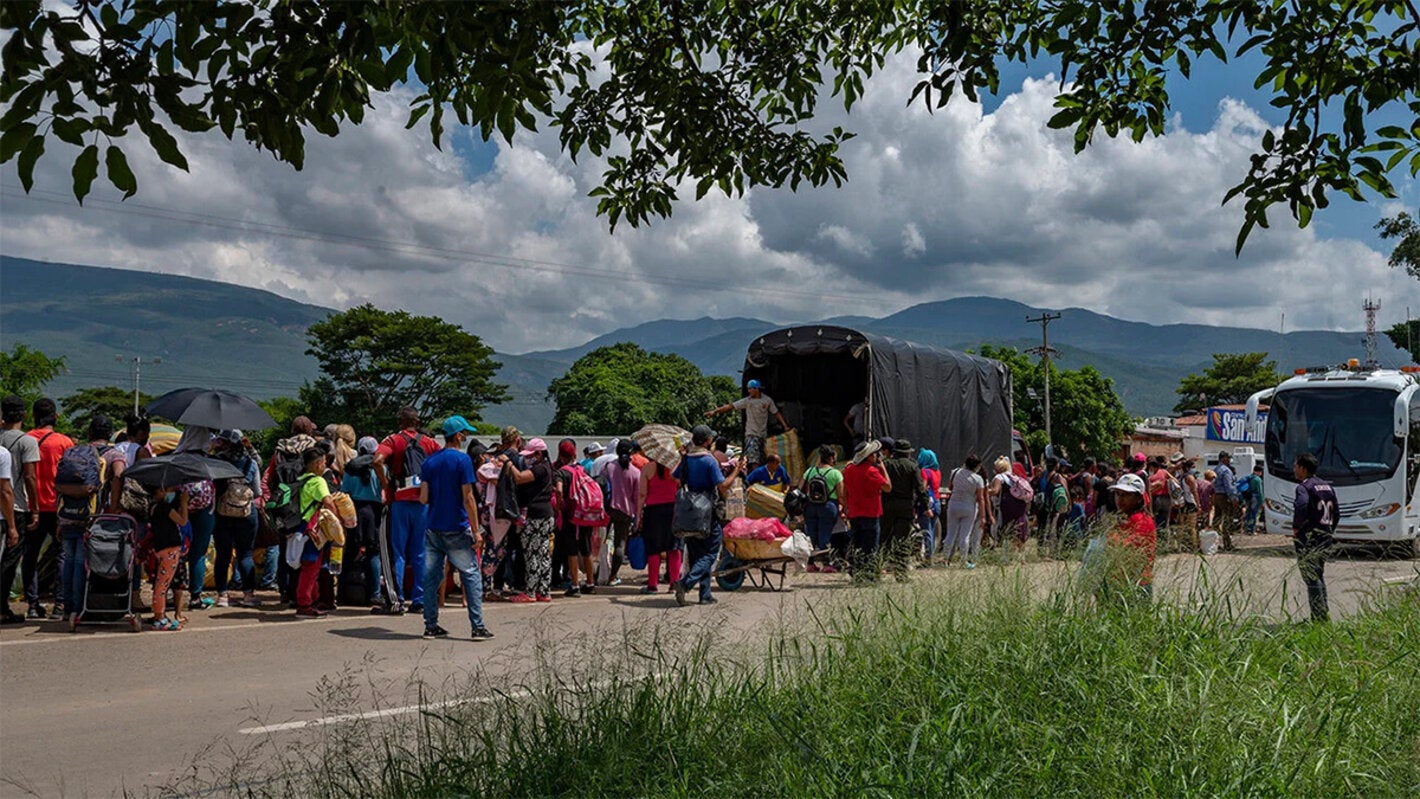
Washington D.C., December 18, 2023. To commemorate International Migrants Day on December 18th, the Pan American Health Organization highlights the notable inequalities and fundamental challenges affecting the health of migrants in the Americas.
During their journey, migrants face high vulnerability due to economic limitations, increased risk for violence and abuse –particularly for women and girls–, limited access to food, shelter, water and sanitation services, and health care, all of which increase the risk of disease and that of mortality and morbidity from preventable causes.
Additionally, migrants face social barriers in host communities such as language and cultural differences, xenophobia, and discrimination.
The dynamic of migration in the Americas, especially the transit to North America, has increased considerably in 2023. The International Organization for Migration reported that migration flow in Mexico increased by 62% in the first eight months of 2023, compared to the same period in 2022.
Although human mobility from Central American and Caribbean countries, especially Haiti, has increased – often due to increased violence and insecurity combined with the impact of droughts and hurricanes, as well as lack of economic opportunity – increased migration in the Americas in 2023 continues to come from Venezuela, Ecuador, and Haiti.
More than 7.7 million Venezuelan refugees and migrants have abandoned their country since 2018, of which 6.5 million (84%) are now in Latin American and Caribbean countries, mainly Colombia.
According to reports from authorities in Panama, as of the last week of November 2023, more than 500,000 migrants had crossed the Darien gap, with Venezuelans being the predominant nationality with more than 320,000 people, followed by Ecuadorians with more than 54,000 migrants. This figure significantly surpasses the number of entries in 2022 (248,000) and 2021 (133,000).
In Central America, the flow of migrants in transit has multiplied almost by three between 2022 and 2023, while the average stay of migrants in host countries has increased, putting enormous pressure on local health systems.
In response to this regional crisis, the Pan American Health Organization, working through its country and subregional offices and in coordination with national health authorities, is focusing on actions to increase medical care for migrants and strengthen the capacity of health services in border areas and along the migratory route. These activities fall under the following strategic lines of intervention:
1) Strengthen health surveillance, information management, and monitoring
2) Improve access to health services for the migrant and host population
3) Improve communication and exchange of information to counter xenophobia, stigma, and discrimination
4) Strengthen partnerships, networks, and multi-country frameworks to understand the status and promote and protect the health of migrants
5) Adapt policies, programs, and legal frameworks to promote and protect the health and well-being of migrants
Under these areas of work in 2023, PAHO/WHO has implemented multiple activities in different countries to protect the health and life of people on the move and to improve access to essential health services for migrants. All of this by contributing to strengthening the preparedness and response capacity of local health networks in border areas and along main migratory routes in countries of transit and final destination.
In Colombia, PAHO/WHO along with the Ministry of Health and the Health Cluster, launched a case management tool to support the migrant population as well as other vulnerable groups comprehensively. This tool gathers information on demographics and medical and health needs and tracks actions by different actors.
PAHO/WHO also coordinated meetings between national health authorities in Colombia and Panama to exchange experiences and activate a regional round table on health response and monitoring public health events of interest in the migrant population.
In Panama, PAHO/WHO also maintains close collaboration with health authorities and has carried out various field visits in Darian to discuss future actions around the care for migrants and to strengthen the health services information system at the local level with human resources, providing a database for improving the care of those crossing from Darien on their way to North America.
In Honduras, PAHO/WHO and the Ministry of Health have worked to strengthen the technical capacity of healthcare personnel at the local level, supporting risk communication in border areas, reinforcing coordination of receiving and transporting patients, and strengthening care in the community to prevent and control infections.
In 2024, PAHO/WHO will continue activities in response to this regional crisis through technical cooperation and support for coordination between health authorities in the different host and transit countries, with the main objective of preserving the lives and health of migrant communities and ensuring their access to health services. PAHO estimates it will need about US$9.5M to attend to the acute humanitarian health needs of migrants throughout the region in 2024.



